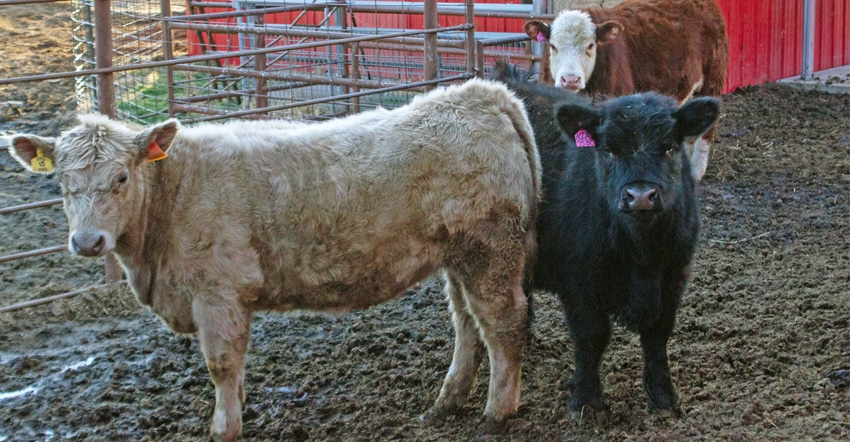Changing diet and providing an escape from mud are the best options to maintain cow health.
March 19, 2021

While the winds kicked up last week to help dry out cattle yards a little, rain came in and soaked the paddocks again. Now cattle are dealing with wet conditions, which can cause them to lose weight if beef cattle producers do not adjust management practices.
Beef cattle is the single largest sector in Kansas agriculture. The state has 6.5 million head of cattle, according to the USDA National Agricultural Statistics Service report. It makes for a lot of cattle in feed yards and pastures, and either place can get downright mucky.
Beef producers should know that mud is not just an inconvenience, said Phillip Lancaster, Kansas State University Beef Cattle Institute veterinarian. If not managed properly, it can negatively impact cattle performance, he says.
Cows eat less
Lancaster addressed the topic on a recent Cattle Chat podcast. He, along with other K-State beef cattle experts, offered advice for reducing the impact of wet spring conditions on cattle performance.
Depending on the mud depth, cattle will consume less feed. He pointed to data collected in feedyards, but added that the same premise applies to cow-calf operations.
“If a cow is standing in 4 to 8 inches of mud, there can be up to a 15% decrease in her feed intake,” Lancaster said. “If cattle actually lay in mud where their haircoat is wet and matted down in cold weather, their maintenance requirements increase 20%.”
If that is the situation a producer is facing, Brad White, a veterinarian and K-State BCI director, suggested altering the cattle diet.
“When the maintenance demands increase, cattle should be fed a diet that is both energy- and protein-dense,” White said.
Provide shelter
To keep the ground protected from the mud, some producers construct shelters for their cattle, but agricultural economist Dustin Pendell said that can be costly.
“Building facilities can be expensive,” Pendell said. “The cheapest structure for shelter is a hoop barn.”
Shelters also encourage cattle to draw closer together, which veterinarian Bob Larson said presents some additional disease risk.
“To reduce the chance for sickness, don’t let the cattle congregate in one area. Move the hay feeding location frequently, and keep it far away from the water source,” Larson said. “By doing that, producers will minimize the accumulation of mud.”
Lancaster also suggested using gravel to fill in high-traffic areas.
“The rock will provide solid footing and keep the cattle from sinking so deep in the mud,” he said.
To hear more about this topic, tune into the BCI Cattle Chat podcast online.
Source: K-State Research and Extension, which is solely responsible for the information provided and is wholly owned by the source. Informa Business Media and all its subsidiaries are not responsible for any of the content contained in this information asset.
You May Also Like



